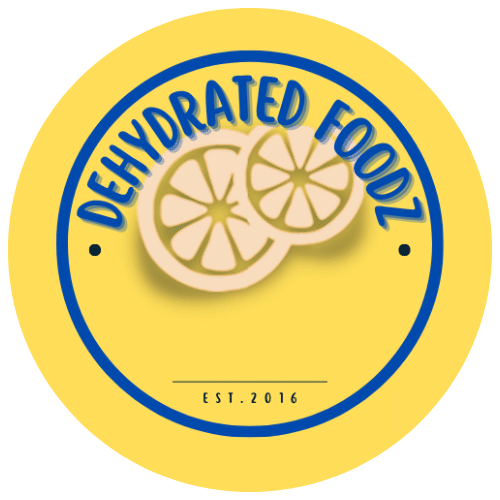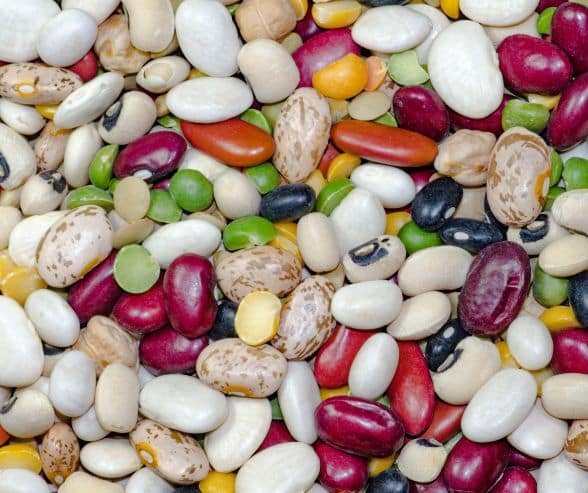Are you interested in finding a shelf-stable and versatile plant-based protein? Well, look no further! Dehydrated beans give you all the nutrition of traditional dried or canned options without the drawbacks! They’re shelf-stable, requiring no refrigeration before preparing. They can be taken with you on camping trips or other outdoor ventures where cans would take up too much precious space in your gear.
These beans offer plenty of delicious possibilities. It matters little where your roots are from; there’s a type of bean to fit every culinary style. From Mexican to Italian to Middle Eastern to Indian cuisine, these incredible little legumes include nearly any recipe.
Are you feeling prepared but unsure of your next move? We have everything you need to create tasty meals with dehydrated beans. Lightweight packets served as groceries during a camping trip? Protein for picnics in the park? Wholesome sustenance for long hikes in the wilderness? You name it; Dehydrated Foodz have you covered! Get ready to dehydrate beans for delicious flavor on those adventurous outings.
Discover the Convenience: Why Dehydrated Canned Beans Are a Must-Try
Want to reduce pantry space or build a pantry for someone in need? Serve emergency meals or plan quick pantry meals? Impress newlyweds with housewarming gifts or prepare for hiking, backpacking, or camping meals. Then, dehydrated, canned beans might be your best bet!
True, dehydrating canned beans requires extra steps. It takes some planning and preparation to ensure the right dry foods are on the shelf. However, it is hard to return once you taste the convenience and speed of cooking with homemade dehydrated beans!
Dehydrated foods are essential components of popular comfort convenience meals. Dry pasta, boxed mashed potatoes, and cup o’ noodles all rely on dehydrated ingredients. So, why not give it a try with beans now?
You can whip up fast and delicious meals with dehydrated beans within hours. Ready to learn how? Let us guide you through the process and unlock the convenience of dry, canned beans!
What Kind Of Beans Can Be Dehydrated?
Beans can be dehydrated: black, red, and pinto beans, white garbanzo, and butter beans. Almost everything works. Store-bought canned beans are easiest to prepare because they come in a can and are ready to use.
How to Dehydrate Beans
Preparing Your Beans
Beans require minimal preparation, making them a fantastic choice. Unlike dehydrating potatoes, which need much prep work, drying beans are a more straightforward option for convenient food.
To clarify, the process involves sorting your vegetable thoroughly and checking for any debris that may be present. It’s crucial to clear any dirt. Nobody wants to discover unwanted bits in their meal.
After sorting the beans, make sure to rinse them. If you plan to cook them on the stove, transfer the vegetable to a bowl, cover them with water, and let them soak overnight. For a hassle-free bean cooking experience, consider the Crock Pot Express (similar to an Instant Pot). Unlike traditional methods, there’s no need to soak the beans beforehand. However, it’s still essential to sort them out before cooking.
Instructions for cooking 1-2 pounds of dry beans on the stove: After draining your soaked beans, put them in a pot and pour cold water until it’s 2 inches above the beans. You can season them to your family’s taste or use salt and pepper for seasoning. Bring it to a boil and simmer on low flame for 2-4 hours.
To make 2lb of beans in the Crock Pot Express, first sort and rinse the beans. Then, add them to the machine’s bowl liner with 4 quarts of water (don’t exceed the fill line), 1 Tbsp oil, 1 tsp salt, and any desired seasonings. Lock the lid and cook on the “beans/chili” setting at high pressure for 40 minutes. Let the pressure release naturally.
The Process of Dehydrating Beans
If you want to save time cooking later, I suggest thoroughly cooking your beans before dehydration. This is the most efficient way to do it and works better than par-cooking, then dehydrating and cooking the rest of the way. Here’s my method:
Start by draining your beans and saving any aquafaba to use in other recipes.
Afterward, you can begin loading your dehydrator with single layers of beans on each tray. It’s not mandatory to use a liner, but be mindful of avoiding overlap.
Set the temperature at 135°F and allow the dehydrating process to happen for 8-10 hours. I recommend doing this overnight and checking on them after about eight hours to remove any already hard and completely dry out beans.
Discover If Your Dried Beans Have Gone Bad
Don’t let moldy, bug-infested, or rancid beans ruin your meal. Toss them out and get a fresh bag. These signs indicate moisture has infiltrated the package, causing the other beans inside it to go bad. Keep storage airtight and away from light to extend their shelf life.
If your dried beans are only slightly faded, don’t worry. This is a common occurrence and doesn’t mean they’re spoiled. Dried beans retain their nutritional value unless opened or visibly ruined.
Store them in a dry, cool, dark place in a sealed container to ensure longevity. This is especially helpful if storing different types of beans to avoid contaminating the rest. Don’t let spoiled beans ruin your day, and invest in proper storage.
Pairing Beans for Complete Proteins
When combined with rice, corn, or pasta, beans form complete proteins that provide all the essential amino acids our bodies need. The combination’s nutritional and gratifying value has made it a staple in diverse cultures worldwide. There is no need to compromise on flavor when you can have health and taste in a dish!
How to Rehydrate Beans
Want perfectly rehydrated beans? Skip the soaking and add them straight to your soup or stew, or boil them in water for just 10 minutes. Easy, right?
Conclusion
Knowing how to dehydrate beans is a great way to preserve and make fast meals for your family.
By utilizing this method of dehydration, you can create convenience foods that are sure to please the whole family! So don’t hesitate – try this simple method today, and you’ll be rewarded with delicious and nutritious meals anytime!
FAQ
Are dehydrated beans healthy?
For sure! Dehydrated beans are a power-packed, fuss-free option for peeps who want a healthy diet. Jammed with goodness like protein, fiber, iron, potassium, and magnesium, this vegetable can give overall health some heart! Plus, they have an extended shelf life and get ready instantly, making them perfect for the go-getter or the health freak trying to keep it accurate. Remember to mix it up! New taste sensations every day equal a well-rounded, gosh-darn-nutritious diet.
How to store dehydrated beans
For beans that stay irresistibly fresh, ditch the plastic bags they come in and transfer them into airtight, food-safe containers. Oh, and keep these containers cool and dry, away from harsh sun rays.
How do you use dehydrated beans?
Get creative with dehydrated beans! Try combining them with rice (Minute or dehydrated) for a delicious and nutritious meal. Add a scoop to your soup for extra protein, or mix dry chickpeas into Middle Eastern, Mediterranean, or Indian dishes. Want to add some Latin flavor? Throw in some dehydrated black or pinto beans to your burrito bowl. And hey, did you know that you can grind dry chickpeas to make instant hummus or bean dip? Toss some dehydrated beans in your chili for added texture and taste. The possibilities are endless!
Do you cook beans before dehydrating them?
Absolutely! For perfectly cooked beans free of any excess liquid, ensure they have been rinsed after being fully cooked.

